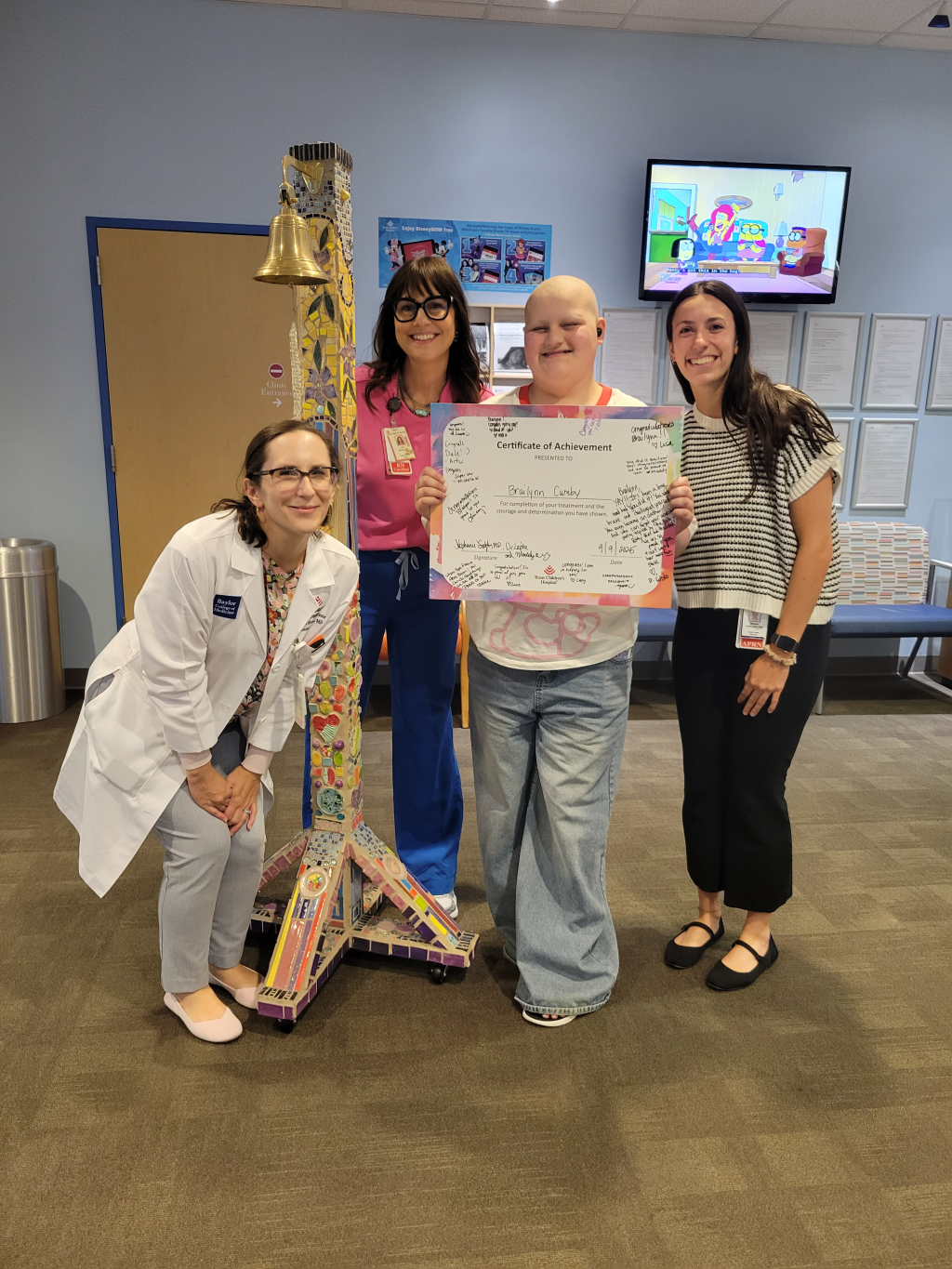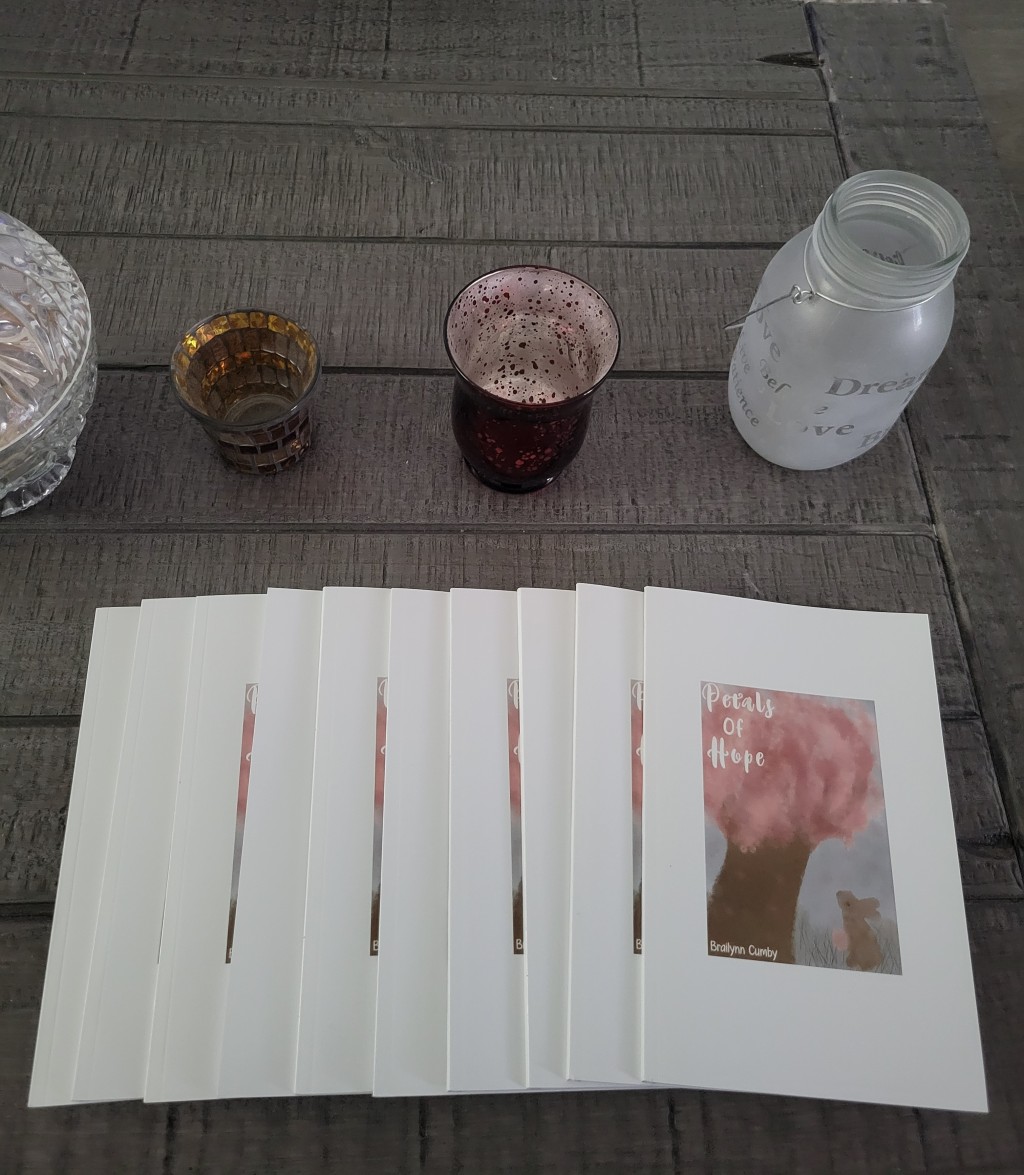Ewing Sarcoma Awareness Day: Brailynn’s Story of Courage, Creativity and Hope


Each year on November 22, hospitals and families come together to recognize International Ewing Sarcoma Awareness Day. This rare and aggressive cancer affects approximately 225 children and teens in the U.S. every year. While it’s highlighted during July’s Sarcoma Awareness Month, having a dedicated day in November provides another meaningful opportunity to bring attention to patients navigating this diagnosis — and to amplify their stories of strength and hope.
At Texas Children's Hospital, we care for children facing some of the rarest pediatric cancers. This November, we are proud to share Brailynn’s story, a 12-year-old girl who turned one of the most frightening experiences of her young life into an opportunity to help other children feel less alone.

For Brailynn, everything began with a small bump on her back. It wasn’t painful, but her parents didn’t know what the bump was or what was causing it, so they took her to see a dermatologist.
Her mother recalls how quickly her concern grew. “It started off small, like a pimple,” she said. “But then it kept growing and turned a purple color. I knew something was off.” A local surgeon removed the mass and sent it for biopsy. A few days later, the diagnosis came back: Ewing sarcoma.
“I was just heading home from school,” Brailynn said, thinking back on the day when she first learned about her diagnosis. “I got into the car, and my mom looked all sad. When we got home, she told me to sit down. She said the thing on my back — the one we thought was a cyst — was cancer.”
The news changed their world instantly.
“When I first found out, I was scared,” Brailynn said. “I kept overthinking the future and panicking. I remember wondering, ‘Am I going to die?’”
Ewing sarcoma is a rare tumor of the bone or soft tissue, most often diagnosed in children, teens and young adults. Typically, it begins in long bones such as the femur, tibia or humerus, but it can also appear in the pelvis or chest wall and can involve muscles and the surrounding soft tissues as well. Ewing sarcoma cells can metastasize quickly to other areas of the body — most commonly to the lungs, bones and bone marrow. Symptoms may include a lump or swelling, pain, fever, fatigue or, rarely, a fracture without trauma.
Although rare, Ewing sarcoma is a treatable condition. Standard care includes chemotherapy, surgery and radiation therapy. Survival rates are significantly higher when the tumor is found early and has not spread.
That’s one reason why raising awareness is so important — awareness can lead families to seek help earlier, as well as strengthen support for research, advocacy and resources for children like Brailynn.
Before beginning chemotherapy, Brailynn’s care team discussed fertility preservation — an important option for patients undergoing treatment.
“They explained that because she had already gone through puberty, the chemo could affect her fertility later in life,” her mother said.
After learning their options, the family chose to pursue egg retrieval, which Brailynn bravely completed. “It turned out really well,” her mom shared. “This will be our first year having her eggs safely in storage.”
Even in those anxious moments, Brailynn found encouragement from her care team at Texas Children’s.
She remembers one surgery in particular. “I remember I was really nervous,” she said. “The nurses asked what music I liked, but I was too out of it to answer, so my mom said Taylor Swift. They played ‘New Romantics’ and sang with me all the way to the surgery room. That’s a core memory.”

Brailynn began a rigorous chemo schedule — alternating two-day outpatient treatments with five-day inpatient stays. Nausea became one of her biggest challenges.
“I didn’t handle it as well after the first round,” she said. “There was a lot of nausea and discomfort.”
Her mother added, “She really struggled at first. It was unusual — her nausea hit two days after chemo ended. But her team listened and found a combination of medicines that worked for her.”
What never got easier for Brailynn, however, were the long inpatient stays. “Home is my safe space,” she said. “I didn’t like the beeping, or waking up every hour. You feel bombarded. And seeing other little kids going through it… that was really hard.”
With help from child life specialists at Texas Children’s, as well as her nurses and her entire oncology team, Brailynn learned to advocate for what she needed — especially during port access, which was difficult at first. “I had to figure out what helped me calm down,” she said. “Like asking them to clean the site, then give me a break before poking. They listened. That made a big difference.”
“Brailynn epitomized resilience during her treatment,” said Dr. Stephanie Fetzko, Director of the Adolescent and Young Adult Program at Texas Children’s Cancer and Hematology Center and Assistant Professor at Baylor College of Medicine. “With amazing patience and true listening from her mom, she adapted and confronted each challenge she faced with strength and a healthy dose of humor.”
Whenever days felt overwhelming, Brailynn turned to creativity. “I always had my earbuds in,” she said. “Listening to music helped me imagine stories — and then I started writing a book.”
That book has evolved into a fully illustrated children’s book that is more than a story—it's a resource. Child Life Specialists now use it to comfort and empower newly diagnosed children, helping them cope with the unknown and feel less alone — and it is now available on Amazon.
Brailynn’s mother said, “She wanted to give other children hope, because she knows how scary it feels when you first hear the word ‘cancer.’”
Brailynn also custom-designed a “chemo shirt” — a soft top with zippers on both sides for easier port access and snaps to keep the sterile field secure. “Sometimes the shirt would fall back down and get in the way,” she explained. “So I came up with the idea: two zippers, snaps to hold it open, and a big kangaroo pocket for your earbuds or fidget items.” Her family is now working to bring the design to market.
In September, Brailynn finished her treatment successfully and rang the bell — a moment she will always remember. She’s back in school, already earning A’s and B’s, and has joined the yearbook committee.

One of the hardest parts of treatment, she shared, was losing her hair. “You don’t want people to judge you,” she said. “But losing your hair doesn’t change who you are. Your personality is what matters.”
When asked what message she wants to share with other children facing a new diagnosis, she said simply, “You’re still beautiful. And you still have hope.”
Her mom added her own advice for other parents: “Take one day at a time. The beginning is a whirlwind — scans, appointments, life turning upside down. Try to keep a routine, create a ‘new normal,’ and just breathe. And never, ever give up. With the amazing breakthroughs they have at Texas Children’s Hospital — and the countless miracles that happen there every day — there is always hope.”
The Faris D. Virani Ewing Sarcoma Center at Texas Children’s Cancer Center, is dedicated to research, advancement and treatment of Ewing sarcoma, the second most common bone tumor in children. As one of the most challenging forms of cancer to treat, these tumors require the most advanced, high-quality and multidisciplinary care. As members of the Children’s Oncology Group, Texas Children’s Cancer Center uses several treatment options for children diagnosed with Ewing sarcoma, including chemotherapy, surgery and radiation therapy.
All patients are managed by a multidisciplinary musculoskeletal team that includes pediatric oncologists, surgeons, pathologists, radiation oncologists, interventional radiologists, physical and occupational therapists, nurses, social workers, child life and more, all collaborating to provide the best possible care tailored to each patient. Experienced orthopedic surgeons provide limb-salvage procedures to preserve maximum function.
On November 22, we honor Brailynn and every child who has faced Ewing sarcoma with strength and resilience. Their stories remind us why raising awareness, supporting research and providing compassionate, family-centered care are so essential. At Texas Children's Hospital, we stand with our patients — not only during their toughest moments but also in the celebrations that follow. Brailynn’s journey exemplifies courage, creativity and transformative care, and we hope it will bring encouragement to other families.
Visit the Texas Children’s Ewing Sarcoma Center website.
Learn more about Texas Children’s Cancer and Hematology Center.